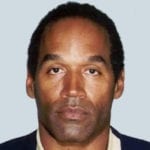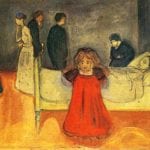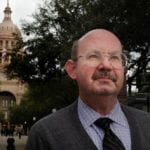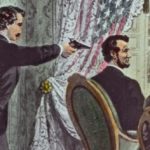 Creepy
Creepy  Creepy
Creepy  Technology
Technology 10 Scientific Breakthroughs of 2025 That’ll Change Everything
 Our World
Our World 10 Ways Icelandic Culture Makes Other Countries Look Boring
 Misconceptions
Misconceptions 10 Common Misconceptions About the Victorian Era
 Mysteries
Mysteries 10 Strange Unexplained Mysteries of 2025
 Miscellaneous
Miscellaneous 10 of History’s Most Bell-Ringing Finishing Moves
 History
History 10 Great Escapes That Ended Right Back in Captivity
 Weird Stuff
Weird Stuff 10 Fascinating Things You Might Not Know About Spiders
 Food
Food 10 Everyday Foods You Didn’t Know Were Invented by the U.S. Military
 History
History 10 Odd Things Colonial Americans Kept at Home
 Creepy
Creepy 10 More Representations of Death from Myth, Legend, and Folktale
 Technology
Technology 10 Scientific Breakthroughs of 2025 That’ll Change Everything
 Our World
Our World 10 Ways Icelandic Culture Makes Other Countries Look Boring
Who's Behind Listverse?

Jamie Frater
Head Editor
Jamie founded Listverse due to an insatiable desire to share fascinating, obscure, and bizarre facts. He has been a guest speaker on numerous national radio and television stations and is a five time published author.
More About Us Misconceptions
Misconceptions 10 Common Misconceptions About the Victorian Era
 Mysteries
Mysteries 10 Strange Unexplained Mysteries of 2025
 Miscellaneous
Miscellaneous 10 of History’s Most Bell-Ringing Finishing Moves
 History
History 10 Great Escapes That Ended Right Back in Captivity
 Weird Stuff
Weird Stuff 10 Fascinating Things You Might Not Know About Spiders
 Food
Food 10 Everyday Foods You Didn’t Know Were Invented by the U.S. Military
 History
History 10 Odd Things Colonial Americans Kept at Home
10 People Who Confessed To Murder On Their Deathbed
It is natural, perhaps, when you are nearing the end of your life, to take stock and look back with some regrets. Whilst most people try to make peace with their families, or regret not appreciating what they have, or, perhaps even losing touch with someone close to them, some people, it seems have bigger issues to grapple with.
Confession, they say, is good for the soul, and it seems that some people find their consciences weighing heavily on them, and they often decide to unburden themselves before they go.
Whilst their remorse may be said to be better late than never, the families left behind are often left having to decide what to do with these revelations after their loved one has died.
Here are 10 people who made deathbed confessions of murder.
See Also: 10 Haunting Anonymous Confession Letters To Unsolved Crimes
10 Harvey Richardson

Harvey Richardson was a mild-mannered retired librarian from Wigan, England, when he died in a hospice at the age of 77. His life appeared to have been, well, unremarkable.
He had no criminal convictions, and, aside from failing his librarianship exams, he had had no major traumas in his life. So, it was all the more remarkable that workmen, clearing him home after his death, discovered a suitcase containing press cuttings about a murder that had taken place almost 40 years earlier.
Along with the cuttings, they also found an antique pistol, an item of women’s underwear, and a 9-page letter, confessing to the murder of Lorraine Jacob.
In the letter, he stated that Jacob had stolen a camera from his home a few weeks before her death. Police have speculated that the reason for this may have been that Richardson had taken pictures of her children without her consent.
The confession went into great detail about the killing, and included details that were not made public at the time. He wrote about how he had gone out to get drunk after failing his exams, and then went out to meet some unnamed ‘friends’, who, police speculated, were actually prostitutes. Richardson’s coyness about this seems rather misplaced, given that he is writing a murder confession.
Later that evening, he saw Lorraine Jacob walking home carrying bags of chips, and he began arguing with her about the camera. He then confessed to losing his temper and strangling her.
Though the crime was not sexually motivated, Richardson removed his victim’s underwear in a bid to make it seems so. He also took her purse containing a pawn ticket which he never redeemed. Although over 100 police officers worked on the case, Richardson was never considered a suspect, until, that is, his confession was discovered.
9 Christopher Smith
When 26-year-old Joan Harrison was found brutally murdered in Preston, England, in 1975, it was believed that she had fallen victim to the notorious Yorkshire Ripper. The Ripper was known to target prostitutes in that area, and a letter from ‘Wearside Jack’, identified Joan Harrison as a Ripper victim.
After the real Yorkshire Ripper, Peter Sutcliffe, was caught in 1981, he confessed to 13 murders, but Harrison was not among them. The letters and tape-recordings by Wearside Jack were a hoax. By this time, however, the trail of evidence on Joan Harrison’s murder had gone cold.
And then, Christopher Smith, suffering from terminal cancer, decided to clear his conscience. Smith had just been arrested on a charge of drink driving and his DNA was taken. Perhaps fearing that the truth was about to come out, and with his imminent death hanging over him, he decided to write out his confession, and leave it in his home to be found after his death.
He wrote a rambling 3-page letter of confession and apology, which was discovered by detectives who searched the house after his DNA results came back a few days later, which confirmed the link to Joan Harrison’s death.
By that time, however, Christopher Smith was already dead.
8 Vernon Seitz

Vernon Seitz died peacefully in his Milwaukee home at the age of 62. After his death, his psychiatrist, carrying out her patient’s wishes, went to the police and told them that Seitz had confessed to shooting 14-year-old Jacob Wetterling, and murdering 2 other unnamed boys.
When police searched Seitz’s home, they discovered a large amount of child pornography, a small collection of worn children’s shoes and a selection of newspaper clippings about Jacob’s abduction. At the time of the disappearance, Seitz was, himself, only 12 years old. He told his psychiatrist that he had been abducted while on a family trip and, after being repeatedly assaulted by his captors, was ordered to kill Jacob Wetterling, or be killed himself.
In Seitz’s basement, police found newly poured cement, bondage equipment and, disturbingly, tufts of human hair. They hammered open the concrete, but found nothing. Despite Seitz’s clear obsession with the murder, they found nothing to link him to the crime. The child’s mother did, however, identify Vernon Seitz as the man who, on two occasions, had gone to her home claiming to be a psychic. He offered to try to find her son, and even gave her a painting that he had done of the child.
Though Seitz was clearly disturbed, his confession turned out to be false.
However, in 2015, police raided the home of Daniel Heinrich, investigating allegations that he was in possession of child pornography. On searching the house, Heinrich was found with a collection of newspaper cuttings and memorabilia relating to Jacob Wetterling’s disappearance, much like the one that Vernon Seitz kept. Heinrich confessed and made a plea deal in exchange for revealing the location of Jacob’s remains.
This time, the police had found the right man.
7 James Brewer

In 2009, James Brewer suffered a stroke and knew that he was dying. Before he went, he knew that there was something that he needed to do to clear his conscience. He asked hospital staff to call the police and request that they come to see him.
When they arrived, he confessed that thirty years earlier he had shot and killed his neighbor who, he believed, was trying to seduce his wife. Brewer and his wife had then moved to a different state and began a new life under assumed names.
In making his confession, Brewer failed to take into account that he was naming his wife as an accessory after the fact, which would have put her in jail. But at least he would meet his maker with a clear conscience.
Unfortunately for Mr Brewer, he recovered from his stroke. And was promptly charged with murder.
6 Michael Lee Wilson

Michael Lee Wilson was already on Death Row, and only moments away from being executed, when he declared ‘Malcom Scott and De’marchoe Carpenter are innocent.’
Scott and Carpenter had been in prison for 20 years, after being convicted of a murder that Wilson had himself committed. They were both 17 at the time of their arrests.
Karen Summers had been gunned down in a drive-by shooting, an innocent casualty in the rivalry between Bloods and Crips gang members. Despite there being no physical evidence, Carpenter and Scott were convicted on the testimonies of 2 eye-witnesses, both of whom later recanted their stories.
Michael Wilson had been interviewed the day after the shooting, and had been found carrying the same make and model weapon that had killed Karen Summers. He also drove a maroon colored Ford Taurus, which matched the description of the vehicle driven by the drive by shooter.
But he was never charged. Instead he walked free, until, four months later when he killed again during the robbery of a convenience store. It is alleged that police pressured the 2 eye witnesses into implicating Carpenter and Scott. One of the eye witnesses had also been shot in the drive-by and it should have been clear from the entry point of the bullets that he had his back to the shooter and could not have identified anyone.
Despite Michael Wilson’s death-bed confession, it took a further 2 years before the men’s sentences were quashed, and they were released.
5 Larry Sherrard

When Larry Sherrard lay dying, he spoke to his niece about his life, and his regrets. And the two murders he had committed.
After he passed away, his niece went to the police to report what he had said. Sherrard claimed that he had killed the men in a drug deal gone wrong, saying, ‘They screwed me on my drugs, and I screwed them.’
The body of one of the men had been found in a cave a year after his disappearance, whilst Sherrard’s niece was able to give the location of the other body, where police found fragments of bone.
4 Catherine Kett

In 1867, Christine Kett was found brutally murdered in her home, having been hit repeatedly with an ax. Her mother, said to be prostrate with grief, called loudly for something to be done, and when Christine’s lover was arrested, her mother, Catherine Kett, even urged her neighbors to lynch him.
Several suspects were accused of the crime, and all were subsequently cleared of any involvement. Years passed, and eventually the community in Dayton began to forget about Christine. Apart from her mother, who was, perhaps understandably, plagued by nightmares.
On her deathbed 17 years later, Catherine Kett called her remaining child to her side, and told him that she needed to get something off her chest. She told him how she had got angry when Christine stayed out all night with her boyfriend and killed her in a fit of rage. Then, she went on to tell him how she had tried to push suspicion on to the lover, and then a number of other people in order to protect herself.
Having relieved herself of the burden of her guilt, she then instructed her son not to tell a soul, and then died. Instead, he told what he knew to the newspapers and the police.
3 Roy Heath
Roy Heath was a man who had always moved in dubious circles. A known associate of the legendary East End Gangsters, The Kray Twins, Heath was in the end stages of terminal cancer in 2009, when he confessed to police that he had strangled Mohammed Taki 12 years earlier.
Taki had disappeared without trace, and although 2 men were arrested in connection with his disappearance, no one was ever charged, and the case remained open. Heath revealed that he had buried Mr Taki’s remains under his patio, and on digging up Heath’s garden, police officers discovered the body wrapped in a duvet cover beneath the concrete.
Although Roy Heath was formally arrested and charged with the murder of Mohammed Taki, officers knew that there was no prospect of getting a conviction, and, indeed, Heath died less than 2 weeks later.
2 Mark Read

Mark Read was a notorious Australian gangster, with the nickname ‘Chopper’, who had already published an autobiography entitled ‘How to Shoot Friends and Influence People’. He had spent 23 years in jail, but he had never been convicted of murder.
The book had claimed that he was ‘involved in’ the murders of 19 people, but sometimes people have been known to exaggerate in order to make sales.
When he realized that his liver cancer was terminal, however, Mark Read decided to set the record straight.
During the interviews, which had to be carried out over 16 days due to Read’s failing health, he confessed to shooting 3 men and strangling a convicted child-killer while he was in prison.
Among his victims was the head of the Outlaws motorcycle gang Sydney Collins, who had been missing for more than 10 years. Read maintained that Collins had turned him into police after Read had shot him in the stomach during a dispute over money. Apparently, he considered the stomach shooting thing ‘petty’ and not the sort of thing that you call the cops about.
The death of the child-killer in his cell had been recorded as suicide.
No stranger to violence, Mark Read claimed he had been stabbed 7 times, shot once, run over by a car, and hit in the head with a hammer, before being made to dig his own grave. Read even asked a fellow inmate to cut off his own ears so that he could be moved to a medical wing during a riotous time when he was in prison.
Although police investigating the Collins’ disappearance vowed to follow up the clues left by Mark Read in his last confession, Read had not left detailed information about where to find the body, was, unfortunately, dead by the time the documentary was aired.
To date, Sydney Collins’ remains have not been found.
1 The Unidentified Man
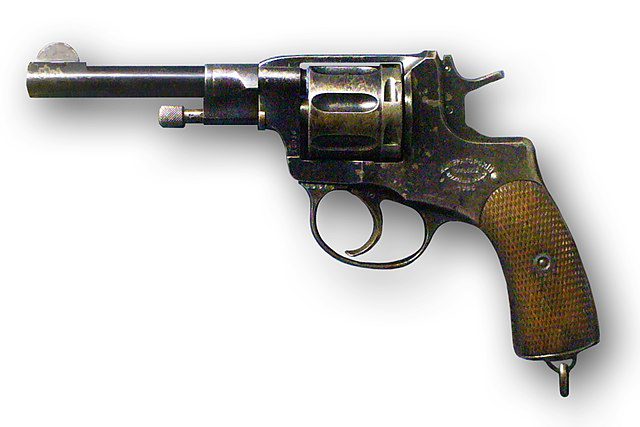
In 2015, a 91-year-old man walked into a police station in Canada and confessed to murdering a prostitute in London 70 years earlier.
The nonagenarian, who has not been named, confessed after having been diagnosed with cancer. He told astonished police that, in 1946, he had rowed with the woman, who he claimed had cheated her out of money. Losing his temper, he pulled out a Russian World War II souvenir pistol and shot her outside the Blue Lagoon night club in Carnaby Street.
Although the pensioner could not remember the name of his victim, after checking with Scotland Yard, he was able to pick the woman’s photograph out of a line-up of unsolved murders.
His victim was Margaret Cook, who had been only 26 years old. Her death was thought to have belonged to the spate of prostitute murders that happened at the end of World War 2. Police were on the scene quickly and chased a man in a Burberry raincoat and pork pie hat through the streets of London, until he vanished in the crowds. It is not known whether this man was the man who made the confession.
Given his age, and his terminal diagnosis, Canadian authorities declined the application of the British government that the man be extradited to stand trial for the murder, and his identity was never made public.
For more lists like this, check out 10 Cold Case Confessions That Will Shock You, and 10 Police Tactics That Can Lead To False Confessions
About The Author: Ward Hazell is a freelance writer and travel writer, currently also studying for a PhD in English Literature
